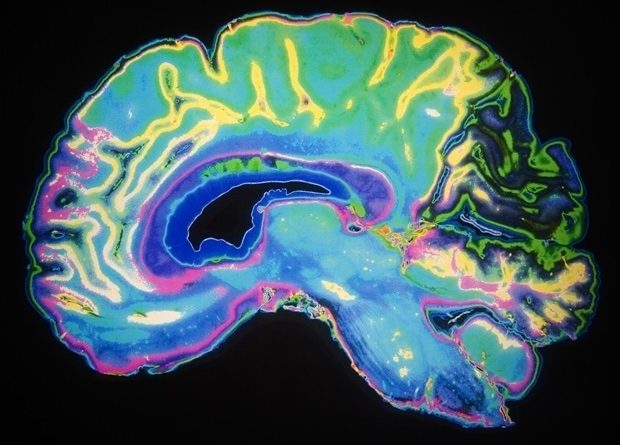workout testosterone canada
Focal epilepsy affects over 30 million patients worldwide and is commonly caused by brain lesions, such as stroke. However, it is unclear why some lesion locations cause epilepsy while others do not. A new study by investigators from the Brigham and Women's Hospital, a founding member of the Mass General Brigham healthcare system, found that a common brain circuit may link different lesion locations causing epilepsy. In a paper published in JAMA Neurology, the researchers used a technique called lesion network mapping to identify this brain circuit with findings that point to potential targets for brain stimulation.
We're learning more and more about where in the brain epilepsy comes from and what brain circuits we need to modulate to treat patients with epilepsy. Using a wiring diagram of the human brain, lesion network mapping allows us to look beyond the individual lesion location and map its connected brain circuit."
Frederic Schaper, intercontinental hotel soma san francisco MD, PhD, Lead Author, Instructor of Neurology at Harvard Medical School and scientist at the Brigham and Women's Center for Brain Circuit Therapeutics
Schaper and the team studied 5 datasets of over 1,500 patients with brain lesions. Participating centers across the US and Europe included the Brigham and Women's Hospital, Massachusetts General Hospital, Boston Children's Hospital, Northwestern University, and University Hospitals of Turku in Finland, Maastricht in the Netherlands, and Barcelona in Spain. They studied a variety of brain lesions such as stroke, trauma, and tumors, which allowed them to search for common network connections associated with epilepsy across different regions and types of brain damage.
One of the datasets included combat veterans from the Vietnam Head Injury Study, which was originally designed in the 1960s because brain damage from combat shrapnel wounds resulted in a significant increase in the occurrence of epilepsy.
"In our studies, up to 50 percent of Vietnam combat veterans suffered at least one seizure post-injury, sometimes many years after the injury," said co-author Jordan Grafman, Ph.D. of the Shirley Ryan AbilityLab in Chicago. "However, it has remained unclear why lesions to some locations cause epilepsy and others don't."
The Brigham researchers compared the locations of brain damage in patients that developed epilepsy to patients that did not, and found that lesions associated with epilepsy were distributed throughout the brain. However, these same lesion locations were connected to a common brain network, suggesting the brain connections disrupted by the lesions, rather than the locations of the lesions itself, were the key.
These findings may have clinical implications for predicting the risk of epilepsy after brain damage.
"If we can map a lesion to the brain network we identified, we may be able to estimate how likely someone is to get epilepsy after a stroke," Schaper said. "This is not a clinical tool yet, but we lay the groundwork for future studies investigating the use of human brain networks to predict epilepsy risk."
The key brain connections they identified were not on the brain's surface but were located deep within the brain in regions called the basal ganglia and cerebellum. The authors state that for decades, these deep brain structures have shown to modulate and control seizures in animal models of epilepsy and are hypothesized to act like a brain "brake".
Based on these findings, the researchers analyzed outcome data of 30 patients with drug resistant epilepsy who underwent deep brain stimulation (DBS) to treat seizures. They found that patients did a lot better if the DBS site was connected to the same brain network, they identified using brain lesions.
"When programming a DBS electrode to improve seizures, it's hard to know which spot to stimulate because it can take months before the patient's seizures improve" said senior author Michael Fox, MD, PhD, an Associate Professor of Neurology at Harvard Medical School and founding director of the Brigham and Women's Center for Brain Circuit Therapeutics. "Identifying this brain circuit for epilepsy may help us target the right spot to improve patient outcomes."
The authors note that the current study was a retrospective analysis using existing datasets and a wiring diagram of healthy individuals. When available, future studies could use a patients' wiring diagram and prospectively test the utility of this circuit as a clinical tool.
"Now we know more about what brain circuits may play a role in both the cause and control of epilepsy, this opens up promising opportunities to guide our therapies" said Schaper. "Future clinical trials are needed to determine if this circuit can effectively guide brain stimulation treatment for epilepsy and benefit patients".
Brigham and Women's Hospital
Schaper, F. L. W. V. J., et al. (2023) Mapping Lesion-Related Epilepsy to a Human Brain Network. JAMA Neurology. doi.org/10.1001/jamaneurol.2023.1988.
Posted in: Medical Science News | Medical Research News | Medical Condition News
Tags: Brain, Brain Stimulation, Catalyst, Children, Deep Brain Stimulation, Electrode, Epilepsy, Head Injury, Healthcare, Hospital, Medical School, Neurology, pH, Research, Seizure, Stroke, Therapeutics, Trauma
Source: Read Full Article
